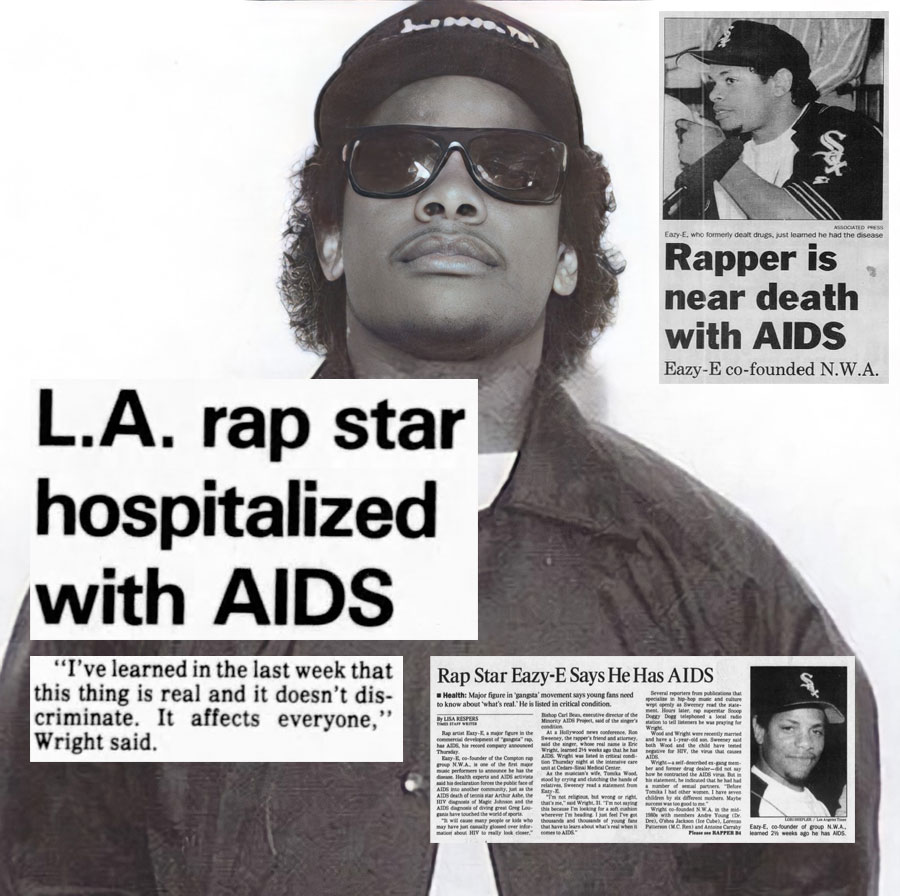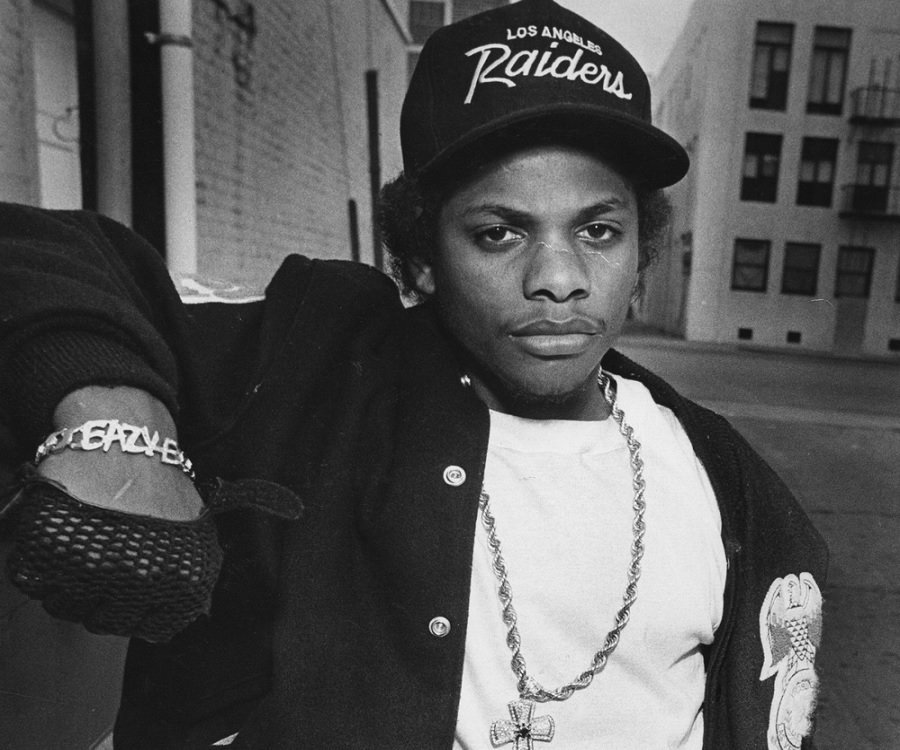Eazy-E's Death: How Did the Rapper Contract AIDS?
Eazy-E, the founding member of the legendary rap group N.W.A., passed away in 1995 at the age of 31 due to complications from AIDS. His untimely death sent shockwaves through the music industry and beyond, and the question of how he contracted the virus has been the subject of much speculation over the years.
According to Eazy-E's widow, Tomica Woods-Wright, he was diagnosed with HIV in 1991, just a few months before his death. It is believed that he contracted the virus through unprotected sex with multiple partners. Eazy-E's diagnosis was kept a secret from the public until after his death, and his illness was attributed to pneumonia.
Eazy-E's death was a tragic reminder of the devastating impact of AIDS, particularly in communities of color. It also highlighted the importance of practicing safe sex and getting tested regularly for HIV.
Eazy-E's legacy continues to live on through his music and his impact on the rap industry. He is remembered as one of the most influential figures in hip-hop history, and his death serves as a reminder of the importance of HIV prevention and awareness.
How Eazy-E Got AIDS
Eazy-E, the founding member of the legendary rap group N.W.A., passed away in 1995 at the age of 31 due to complications from AIDS. His untimely death sent shockwaves through the music industry and beyond, and the question of how he contracted the virus has been the subject of much speculation over the years.
- Unprotected sex: Eazy-E is believed to have contracted HIV through unprotected sex with multiple partners.
- Lack of awareness: In the early 1990s, when Eazy-E was diagnosed with HIV, there was still a lot of stigma and misinformation surrounding the virus. It is possible that Eazy-E was not fully aware of the risks of unprotected sex.
- Multiple sexual partners: Eazy-E admitted to having multiple sexual partners, which increased his risk of contracting HIV.
- Drug use: Eazy-E was a known drug user, and drug use can increase the risk of HIV transmission.
- Blood transfusions: It is also possible that Eazy-E contracted HIV through a blood transfusion. However, this is less likely, as blood transfusions are carefully screened for HIV.
- Other factors: There may have been other factors that contributed to Eazy-E's contraction of HIV, such as his overall health and immune system.
Eazy-E's death was a tragic reminder of the devastating impact of AIDS, particularly in communities of color. It also highlighted the importance of practicing safe sex and getting tested regularly for HIV.
Personal details and bio data of Eazy-E:
| Name: | Eric Lynn Wright |
| Stage name: | Eazy-E |
| Born: | September 7, 1964 |
| Died: | March 26, 1995 |
| Occupation: | Rapper, record producer, entrepreneur |
| Known for: | Founding member of N.W.A., solo career |
Unprotected sex
Unprotected sex is one of the most common ways to transmit HIV. When someone has unprotected sex with an infected partner, they are at risk of contracting the virus. Eazy-E is believed to have contracted HIV through unprotected sex with multiple partners.
- Multiple sexual partners: Eazy-E admitted to having multiple sexual partners, which increased his risk of contracting HIV.
- Lack of awareness: In the early 1990s, when Eazy-E was diagnosed with HIV, there was still a lot of stigma and misinformation surrounding the virus. It is possible that Eazy-E was not fully aware of the risks of unprotected sex.
- Drug use: Eazy-E was a known drug user, and drug use can increase the risk of HIV transmission.
Eazy-E's death was a tragic reminder of the devastating impact of AIDS, particularly in communities of color. It also highlighted the importance of practicing safe sex and getting tested regularly for HIV.
Lack of Awareness
In the early 1990s, when Eazy-E was diagnosed with HIV, there was still a lot of stigma and misinformation surrounding the virus. This lack of awareness may have contributed to his contraction of the virus.
- Stigma and Discrimination: HIV/AIDS was often seen as a shameful disease, and people with HIV were often ostracized and discriminated against. This stigma made it difficult for people to get tested for HIV and to seek treatment.
- Misinformation: There was a lot of misinformation about HIV/AIDS in the early 1990s. Some people believed that HIV could be transmitted through casual contact, such as shaking hands or sharing a meal. Others believed that HIV was a death sentence.
- Lack of Education: Many people, including Eazy-E, were not fully aware of the risks of unprotected sex. In the early 1990s, there was less public education about HIV/AIDS than there is today.
The lack of awareness about HIV/AIDS in the early 1990s contributed to the spread of the virus. It is possible that Eazy-E contracted HIV because he was not fully aware of the risks of unprotected sex.
Multiple sexual partners
Having multiple sexual partners is a major risk factor for contracting HIV. When someone has sex with multiple partners, they are more likely to come into contact with the virus. This is because each new partner represents a new potential source of infection.
Eazy-E admitted to having multiple sexual partners, which increased his risk of contracting HIV. He was diagnosed with HIV in 1991, and he died from complications of AIDS in 1995.
Eazy-E's story is a reminder that HIV is a serious disease that can affect anyone. It is important to practice safe sex and to get tested regularly for HIV.
Drug use
Drug use is a major risk factor for HIV transmission. This is because drug use can damage the immune system, making it more difficult for the body to fight off infection. Additionally, drug use can lead to risky sexual behaviors, such as unprotected sex and sex with multiple partners. These behaviors can increase the risk of HIV transmission.
Eazy-E was a known drug user, and it is possible that his drug use contributed to his contraction of HIV. Eazy-E was diagnosed with HIV in 1991, and he died from complications of AIDS in 1995. His death is a reminder that HIV is a serious disease that can affect anyone, including drug users.
It is important for drug users to be aware of the risks of HIV transmission and to take steps to protect themselves from infection. These steps include using clean needles and syringes, practicing safe sex, and getting tested regularly for HIV.
Blood transfusions
Although it is less likely, it is possible that Eazy-E contracted HIV through a blood transfusion. In the early 1990s, when Eazy-E was diagnosed with HIV, blood transfusions were not as carefully screened for HIV as they are today. It is possible that Eazy-E received a blood transfusion from an infected donor.
- Blood transfusions and HIV screening: Today, blood transfusions are carefully screened for HIV. This means that the blood is tested for HIV antibodies before it is transfused into a patient. This helps to reduce the risk of HIV transmission through blood transfusions.
- Blood transfusions in the early 1990s: In the early 1990s, blood transfusions were not as carefully screened for HIV as they are today. This is because the HIV antibody test was not developed until 1985. Before 1985, there was no way to test blood for HIV.
- Eazy-E's blood transfusion: It is possible that Eazy-E received a blood transfusion from an infected donor in the early 1990s. This could have happened if the donor was in the window period of HIV infection. The window period is the time between when someone is infected with HIV and when the HIV antibody test becomes positive.
Eazy-E's death is a reminder that HIV is a serious disease that can affect anyone. It is important to practice safe sex and to get tested regularly for HIV.
Other factors
In addition to the risk factors discussed above, there may have been other factors that contributed to Eazy-E's contraction of HIV. These could include his overall health and immune system.
People with weakened immune systems are more likely to contract HIV. This is because HIV attacks the immune system, making it more difficult for the body to fight off infection. Eazy-E had a history of drug use, which can weaken the immune system.
Additionally, Eazy-E was diagnosed with HIV in the early 1990s, when there were fewer treatment options available. This means that he may not have been able to access the medications that could have helped to strengthen his immune system and slow the progression of the virus.
Eazy-E's death is a reminder that HIV is a serious disease that can affect anyone. It is important to practice safe sex, get tested regularly for HIV, and maintain a healthy immune system.
FAQs about Eazy-E and HIV/AIDS
This section addresses frequently asked questions about Eazy-E's contraction of HIV and the impact of AIDS in the early 1990s.
Question 1: How did Eazy-E contract HIV?
Eazy-E is believed to have contracted HIV through unprotected sex with multiple partners. He was diagnosed with HIV in 1991 and died from complications of AIDS in 1995.
Question 2: What were the contributing factors to Eazy-E's contraction of HIV?
In addition to unprotected sex, other factors that may have contributed to Eazy-E's contraction of HIV include his overall health, immune system, and drug use.
Question 3: Why was Eazy-E's HIV diagnosis kept a secret?
Eazy-E's HIV diagnosis was kept a secret at his request. He was concerned about the stigma surrounding HIV/AIDS at the time and did not want to be associated with the disease.
Question 4: What impact did Eazy-E's death have on the hip-hop community?
Eazy-E's death was a major loss for the hip-hop community. He was one of the most influential figures in the genre and his death helped to raise awareness about HIV/AIDS.
Question 5: What are the lessons that can be learned from Eazy-E's story?
Eazy-E's story is a reminder that HIV/AIDS is a serious disease that can affect anyone. It is important to practice safe sex, get tested regularly for HIV, and maintain a healthy immune system.
Question 6: How has the treatment of HIV/AIDS changed since the early 1990s?
Since the early 1990s, there have been significant advances in the treatment of HIV/AIDS. Today, there are a variety of medications that can help to suppress the virus and improve the quality of life for people with HIV.
Summary of key takeaways or final thought:
Eazy-E's death was a tragedy, but it also helped to raise awareness about HIV/AIDS. Today, there are a variety of resources available to help people prevent and treat HIV/AIDS. It is important to get tested regularly for HIV and to practice safe sex.
Transition to the next article section:
The following section will discuss the impact of HIV/AIDS on the African American community.
Conclusion
Eazy-E's contraction of HIV and subsequent death from AIDS was a tragedy that had a profound impact on the hip-hop community and beyond. His story is a reminder that HIV/AIDS is a serious disease that can affect anyone, regardless of age, race, or socioeconomic status. It is important to practice safe sex, get tested regularly for HIV, and maintain a healthy immune system.
Since the early 1990s, there have been significant advances in the treatment of HIV/AIDS. Today, there are a variety of medications that can help to suppress the virus and improve the quality of life for people with HIV. However, there is still no cure for HIV/AIDS, and it is important to continue to raise awareness about the disease and to encourage people to get tested and practice safe sex.
Uncover The Lavish Net Worth Of Metro Boomin: A Musical Mogul's Fortune
Jesse Watters' Salary: A Look At His Net Worth And Earnings
Master The Art Of The Low Taper Mullet: An Ultimate Guide To Style And Sophistication



ncG1vNJzZmieoprAqbrEsKpnmpykr2%2BvzqucZ6%2BZo7Gww9JnpZ6sX6W8tL%2FIm6OerJmisnC0zrBknaGUYrKixthmnGaflal6orXDrGWhrJ2h